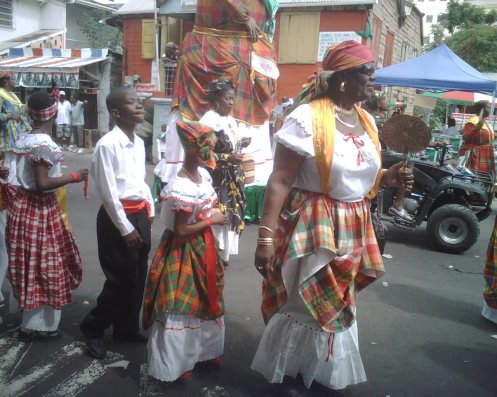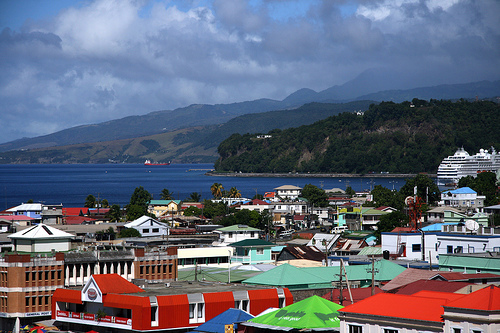David, F8AAN is currently active as J79AN from Dominica Island, IOTA NA - 101.
He will operate on HF Bands, CW, SSB, Digital modes.
Recent DX Spots J79AN
J79AN Log search QSL via ClubLog OQRS.
Previous activity:
J79AN call is used before.
DL7JAN will be active from Dominica Island, (IOTA NA-101) 23 February - 6 March 2011 as J79AN.
He will be active on HF bands CW, SSB, RTTY.
QSL via home call direct, buro.
Dominica: what is the life of a modern island nation?
The Commonwealth of Dominica is an island nation in the eastern Caribbean, which has become one of the main tourist destinations in the region due to its rich natural resources. At the same time, Dominica is the Antilles' most mountainous and inaccessible island. Due to its remote geographical location, it was colonised much later than the neighbouring atolls. Unlike the other Antilles, Dominica has been fortunate to escape the ruthless economic exploitation of its lands. There have never been large-scale plantations here, and the island itself was favoured by runaway slaves, the Maroons. Only here the hand of European justice could not reach them.
How has the country developed over the centuries?
Because of the steady settlement of Carib Indians, who gave a strong rebuff to any attempts by white outsiders (French planters and English missionaries) to take over the island, the atoll was never fully taken over by Europeans until 1750. It was not until 1783 that the British succeeded in driving the Caribs to the coast and confining them to a reservation. The British settled in the town of Roseau, built by the French on the site of a former Caribbean village, Sairi. Having gained total control over the island, the enterprising British engaged in vigorous economic activity. First of all, they brought black people to the atoll and established small plantations of cotton and tobacco. Because of the active trade, new residential neighbourhoods gradually began to adjoin the town of Roseau. The city itself grew in size and eventually became the capital of Dominica and its main administrative centre.
The Maroons, runaway slaves from the neighbouring islands of Guadeloupe and Martinique, often terrorised the British. This phenomenon continued until the abolition of slavery in 1834 and only completely disappeared after black Dominicans were given the opportunity to be represented in the legislature. In the twentieth century, black people played a huge role in the island's politics and culture. In 1978, thanks to a deep political and socio-economic crisis, the people of Dominica managed to secede from the British Commonwealth without bloodshed.

The secret of the ethnic composition of Dominica's population and buildings
In terms of ethnic composition, the modern population of the island is predominantly African. Caribs still live on the atoll, but they mostly live in the countryside or in the nature reserve area, where they practice traditional trades such as basket weaving and building small wooden boats. People identifying themselves as Lebanese, Syrians, Chinese own part of the largest businesses in the capital.
It is Roseau that is considered the administrative and commercial heart of Dominica. Most of the buildings here date back to the colonial era. They tend to be low Victorian-style wooden buildings or stone townhouses with large carved verandas. New buildings constructed after independence are solid concrete structures. The Dominican government, having learnt from the bitter experience of rebuilding the capital after the devastating hurricanes David (1979) and Dean (2007), has turned construction towards practicality and good earthquake resistance.
The city's buildings look quite small against the background of the multi-storey cruise ships that call at its reconstructed harbour after the hurricane of 2007. The main decoration of the capital is considered to be the temple on the Morne Bruce Mountain with a large black and white crucifix. No less remarkable sights of Dominica are the old English forts - "Young" (Roseau town) and "Shirley" (Portsmouth town).

Nature's advantages and tourism prospects: what are they?
With its stunning volcanic landscapes, tropical climate, national parks with rare bird species, and the second largest "boiling" lake in the world, the island is potentially very attractive to tourists. But the lack of a modern airport, a handful of poorly developed infrastructure and a rather underdeveloped industry are hampering the development of economic prosperity. The government is hatching plans to build a new airport capable of handling passenger airliners, but worries that the growing number of visitors and the large influx of eco-tourists will damage the balanced environment. Dominica is also very vulnerable to natural disasters such as storms, typhoons, floods and landslides.
It is worth mentioning that in August 2015, the Caribbean islands were hit by Tropical Storm Erika, which was devastating in its destructive power. Dominica was unlucky enough to be at the very epicentre of the raging natural disaster, as a result of which almost all settlements on the atoll were wiped off the face of the earth. According to the Prime Minister of the Republic, the island's economic development has been set back 20 years and the country's agriculture and industry will have to be rebuilt virtually from scratch.

